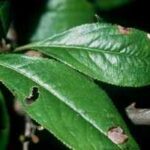Witch hazel, one of winter’s flowers, is a pleasurable surprise to behold during a walk in the woods in the later part of autumn. The witch hazel shrub is tall and filled with beautiful yellow flowers that resemble stars and is a native of North America. The witch hazel plant developed a late blooming scheme to take the benefit of the pollinators during the time when there is not much for them to do.
Witch hazel hamamelis virginiana can start flowering during the early parts of October before their autumn colored leaves reach the ground. Most of the time they will bloom after the leaves are gone. Sometimes these shrubs will still be blooming in December. Witch hazel generally grows in a wooded area or a forest and most will not see them bloomiing unless they wander inside.
The witch hazel flower is made up of four yellow ribbon-like petals that attract flys and bees. These insects will get tiny bits of nectar tacky pollen as a treat. During the months of November and December there are so few insects around that the temperature needs has to warm enough for them to fly to the flowers for pollination. Because of this many witch hazel plants will not produce witch hazel fruit.
In your winter garden, witch hazel shrubs are a must for their color and aroma. Winter is the time of the year when few plants are in bloom, but having a witch hazel will bring some color to the landscape with cream to yellow flowers and their petals are very delicate. It can be grown as a single-stem or multi-stem shrub that can grow to between 12 and 20 feet tall and spread 10 to 15 feet wide. If you plant witch hazel shrubs along a pathway, entry garden or on a patio you can enjoy its aroma in the middle of winter. They can be planted with ornamental grasses, winterberry or the Christmas rose.
Witch hazel can conform to many soil conditions but it prefers a moist acidic soil. It also does well in full sun to partial shade. These shrubs need watering regularly during the first year and during drought periods. They generally do not have problems with diseases or pests. They are care-free and easy to prune by trimming the dead wood and removing crossing stems.
This flowering shrub of winter can be in mixed border of shrubs, a wild natural area, and in a well manicured garden. It also provides deer, rabbits, and birds some delectable seed. Even though it can be grown along side the deer, it is not resistant to the deer, but their browsing will not harm the shrub. If preferred chicken wire can be placed around the young witch hazel plants.
Witch hazel comes from the Old English word “wyche” meaning flexible or pliant because of the ease of the twigs to bend and from the hazelnut shrub even though not related. Witch hazel twigs, because of their flexibility, have also been used as divining rods in the search for underground springs.




